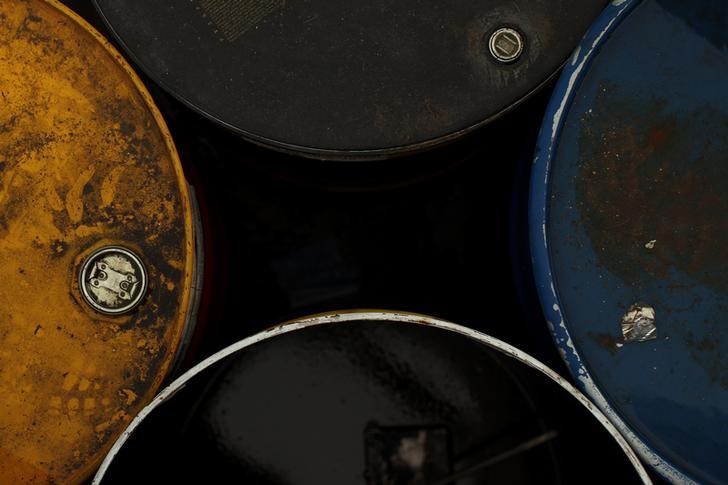By Julia Payne and Dmitry Zhdannikov
LONDON (Reuters) - After extreme oil volatility that provided traders with bumper profits in the first half of the year, the market is now stuck in a lower gear, fatigued by the realities of COVID-19.
Lower overall oil supplies after production cuts implemented by the OPEC+ group of producers, as well as tepid fuel demand, are dampening price movements.
"If you look at market liquidity, paper activity, ICE (NYSE:ICE) futures volumes or gasoil or jet swaps ... everything had a very active Q2, but activity seems to have reduced in Q3," Russell Hardy, chief executive of the world's biggest trader, Vitol, told Reuters.
"Is that because the market is tired and has been at $40 a barrel for so long, because everybody is working from home or because oil demand is significantly less than what it was and so there is less activity to hedge?”
(Graphic: Traded volumes of Brent oil futures - https://fingfx.thomsonreuters.com/gfx/ce/qmyvmbkodpr/oil%20futures%20volume.PNG)
Major trading firms see an uncertain path as the world economy flatlines after a stunted V-shaped recovery served to subdue speculative trade and hedging for physical oil assets.
The United States and India are battling runaway rates of contagion while large European economies are experiencing second waves of COVID-19 infections, potentially leading to national lockdowns
For the first time in years, major trading houses are not going to post a rise in year-end traded oil volumes.
“Obviously, with crude trading, it's difficult to maintain business volumes because there is less crude to market and trade; there's less being produced,” Hardy said.
On refined products, meanwhile, the trading firms that thrive from market disconnects between regions - known as arbitrage - see fewer ways to make a buck.
“In the Atlantic basin, refiners are running to meet relatively poor downstream demand. The result is that refineries are importing and exporting less. Consequently, the local market presents fewer opportunities,” Hardy said.
The Vitol boss told a conference in Singapore last week that he did not expect gasoline and diesel demand to return to previous levels until the fourth quarter of 2021.
While BP (L:BP) and others posit scenarios that peak oil demand may have been reached already, Vitol believes that there is still significant growth to come in Asia. Last year the trader forecast peak global oil demand to be reached around 2034.
“We haven't revised our 10-year view since COVID," Hardy said. "When we redo the study, we’ll probably come up with lower peak oil demand than before ... but we think Asian demand growth will pull through and take us beyond 2019 in the years to come.”
